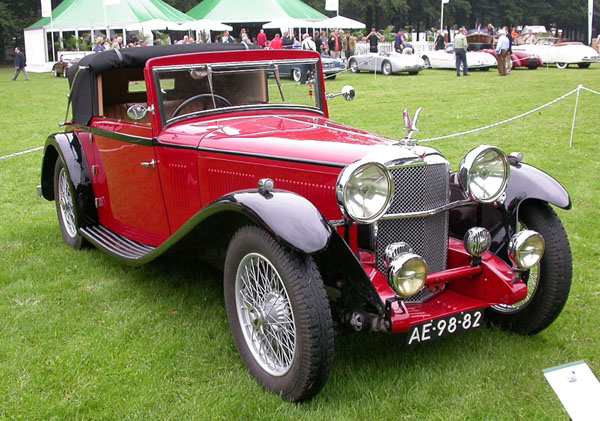Alvis cars were produced by the Alvis Car and Engineering Company Limited of Coventry, UK, from 1919 to 1967. Initially the company, TG John & Co. Ltd was founded in 1919 and it produced stationary engines, carburettor bodies and motor scooters.
Early in its life the company’s founder, TG John, was approached by Mr. Geoffrey de Freville with designs for a four-cylinder engine which was quite unusual for that time in that it used aluminium pistons and had pressure lubrication.
It has been suggested by some that de Freville had proposed that the car and its manufacturer be called ‘Alvis’ combining the chemical symbol for aluminium –’al’- with the Latin ‘vis’ (meaning strength) but de Freville vigorously denied this theory. The true origin is not recorded in history but some later suggested the Norse mythological weapon smith, ‘Alviss’ may have been the source.
The first car, designated model 10/30 using the de Freville design was an instant success as was its reputation for quality and performance. It was these things that made the company famous. In 1921 the company adopted a new name, Alvis Car and Engineering Company Ltd, and moved its production facility to Coventry from where they also made the Buckingham car from 1922 to 1923.
The original Alvis 10/30 side-valve engine was developed progressively until in 1923 when it was converted to an overhead-valve 12/50, which remained in production until 1932 and in that time became one of the most successful vintage sports cars of all time. Following progressive improvements this engine became the 12/70 and was used right up to 1940 when car production was suspended.










